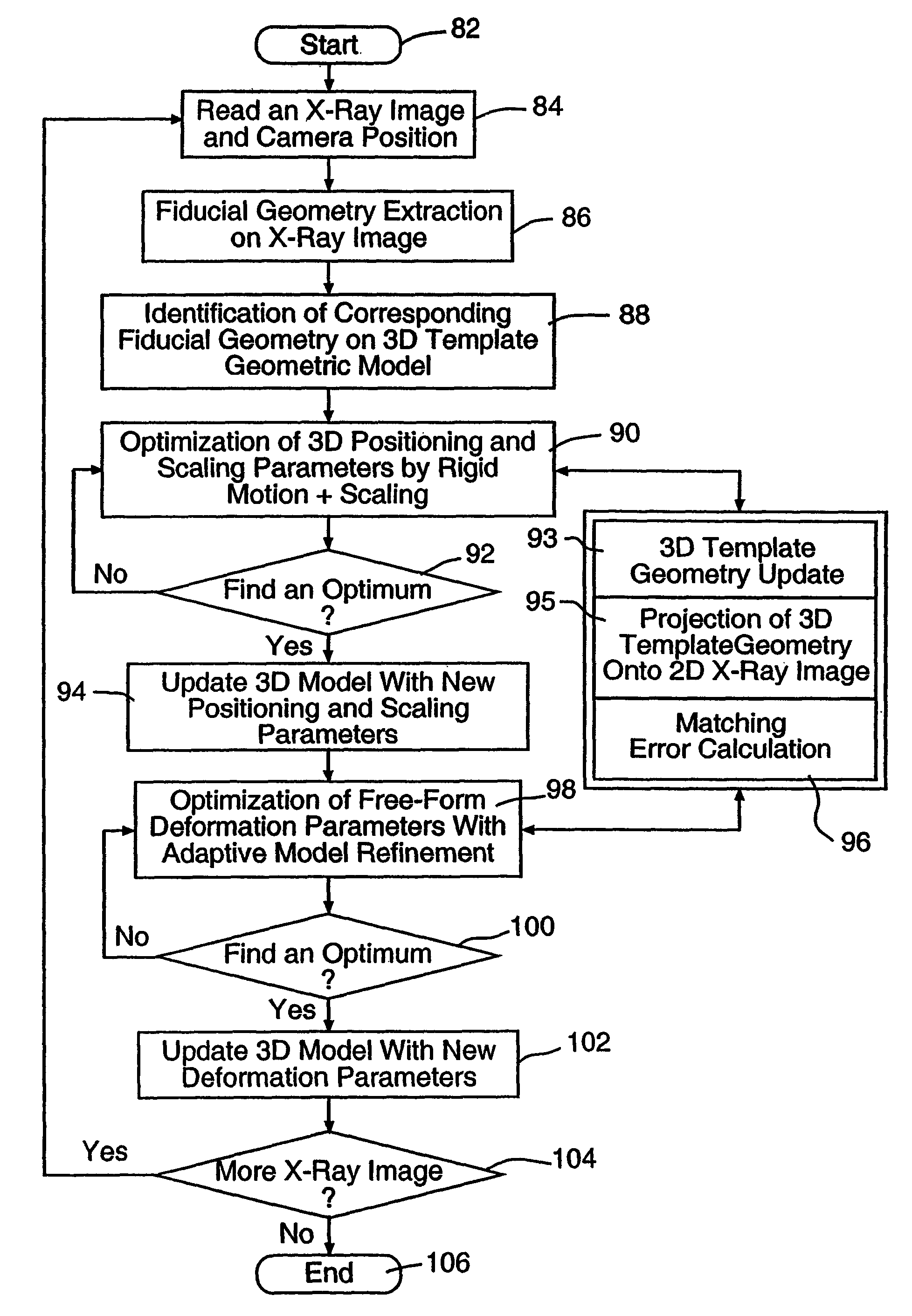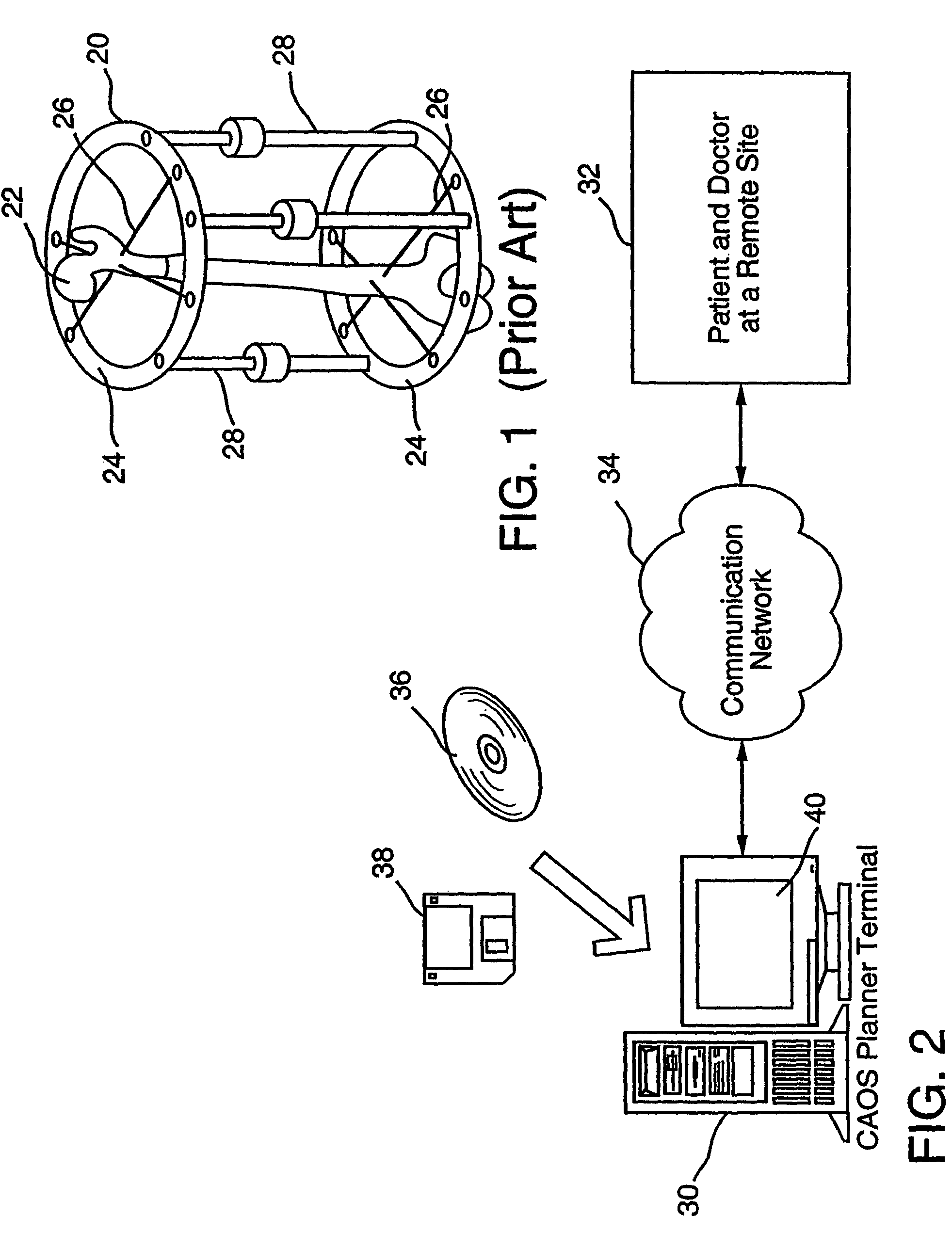Computer-aided bone distraction
a computer-aided, bone distraction technology, applied in the field of orthopaedic surgery, can solve the problems of inability to teach or utilize three-dimensional bone deformity or bone geometry, inability to accurately depict the complexity involved in accessing the target, and difficulty, if not impossible, to make accurate surgical plans based solely on a limited number of two-dimensional renderings of bone geometry. , to achieve the effect of reducing the frequency, reducing the cost of patients, and shortening the treatment frequency
- Summary
- Abstract
- Description
- Claims
- Application Information
AI Technical Summary
Benefits of technology
Problems solved by technology
Method used
Image
Examples
Embodiment Construction
[0052]FIG. 2 depicts an exemplary setup to perform computer assisted orthopedic surgery according to the present invention. A computer assisted orthopedic surgery planner computer 30 is accessible to a surgeon in a remote operation site 32 via a communication network 34. In one embodiment, the communication network 34 may be an ethernet LAN (local area network) connecting all the computers within an operating facility, e.g., a hospital. In that case, the surgeon and the computer assisted orthopedic surgery terminal 30 may be physically located in the same site, e.g., the operating site 32. In alternative embodiments, the communication network 34 may include, independently or in combination, any of the present or future wired or wireless data communication networks, e.g., the Internet, the PSTN (public switched telephone network), a cellular telephone network, a WAN (wide area network), a satellite-based communication link, a MAN (metropolitan area network) etc.
[0053]The computer ass...
PUM
 Login to View More
Login to View More Abstract
Description
Claims
Application Information
 Login to View More
Login to View More - R&D
- Intellectual Property
- Life Sciences
- Materials
- Tech Scout
- Unparalleled Data Quality
- Higher Quality Content
- 60% Fewer Hallucinations
Browse by: Latest US Patents, China's latest patents, Technical Efficacy Thesaurus, Application Domain, Technology Topic, Popular Technical Reports.
© 2025 PatSnap. All rights reserved.Legal|Privacy policy|Modern Slavery Act Transparency Statement|Sitemap|About US| Contact US: help@patsnap.com



